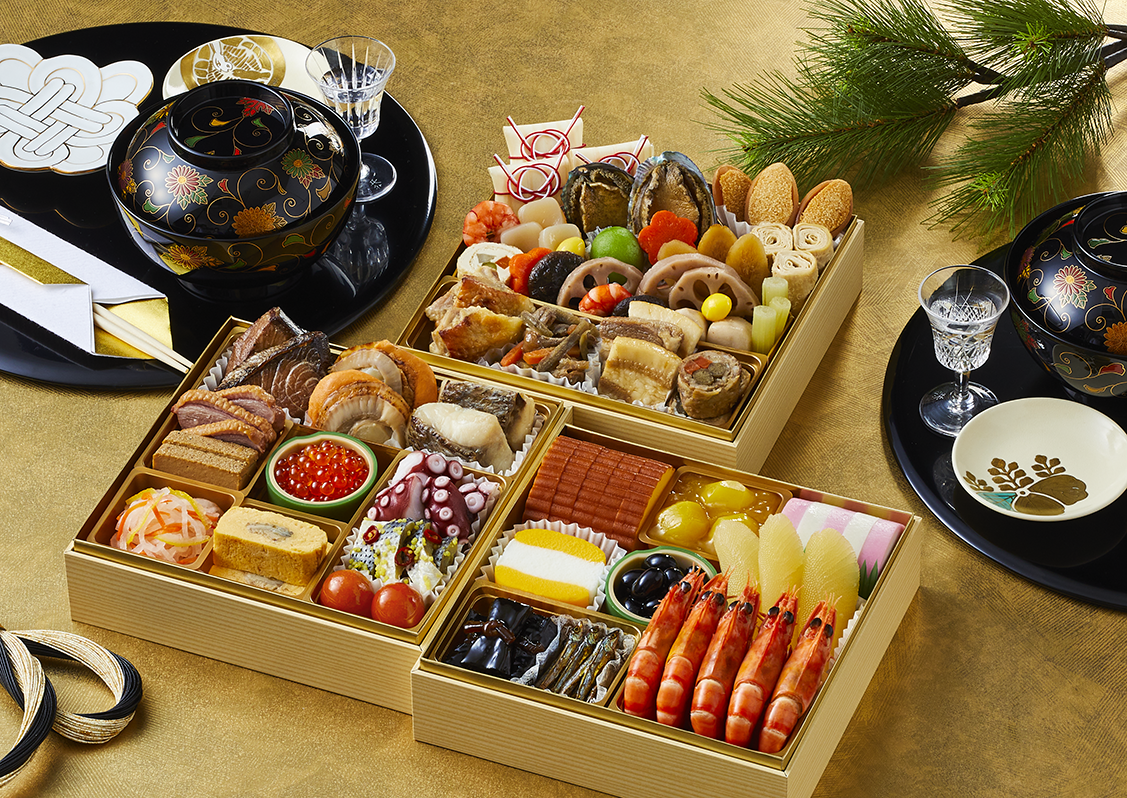
And even though there are some staples on the menu throughout the nation, what goes into those staples also varies!
New Year’s is a highly auspicious time in Japan, a time when you want to keep a peaceful, quiet home to welcome any visiting spirits and promote good fortune for the year. That means there are some rules for the first three days of the New Year that, if broken, could result in bad luck.
Two of those involve cooking or eating–no boiling water over a fire and no eating four-legged creatures–and another says no cleaning, so naturally, that sort of precludes anyone from being able to cook their own meals in the first three days of the year. Luckily, there’s a tradition for that: cooking (or buying) a boatload of food before the New Year and eating it over three days!
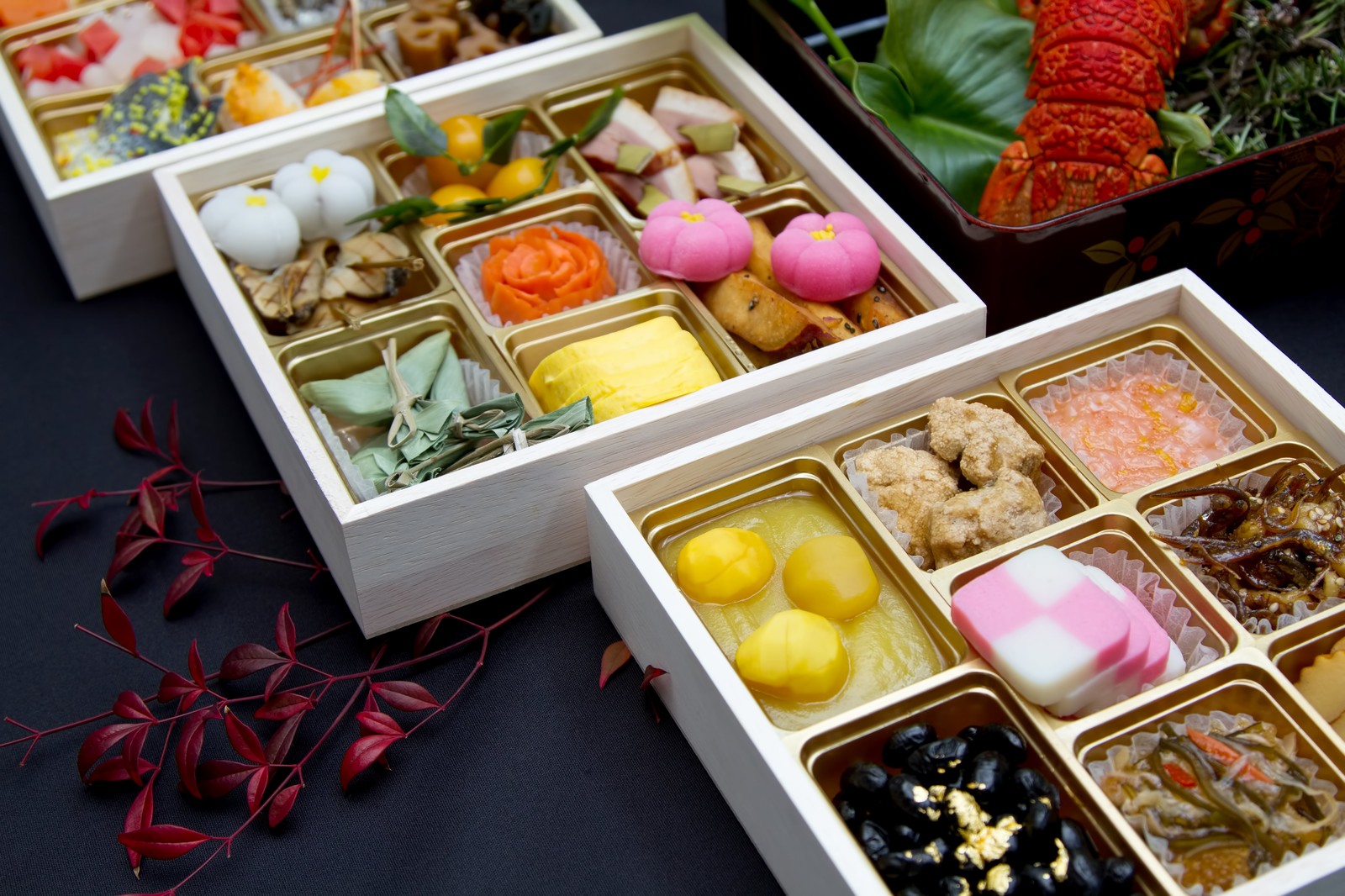
New Year’s food is called “osechi ryori” and is composed of dozens of different small dishes of vegetables and seafood, but as it turns out, the dishes used can vary greatly by region. Food production company Kibun Foods released its annual “Oshougatsu Hyakka” magazine, which is all about New Year’s and osechi, and this year’s included the results of a survey about what people eat on New Year’s. The results were pretty interesting!
The survey asked 5,875 married women from all 47 prefectures between the age of 20 and 60 about what they prepare for osechi. 49 answers were supplied, but there was a definite most popular dish: kamaboko, or steamed and seasoned fish paste. 83.2 percent of respondents said they included it in their osechi meals.
▼ Shown here as the pink and white squares
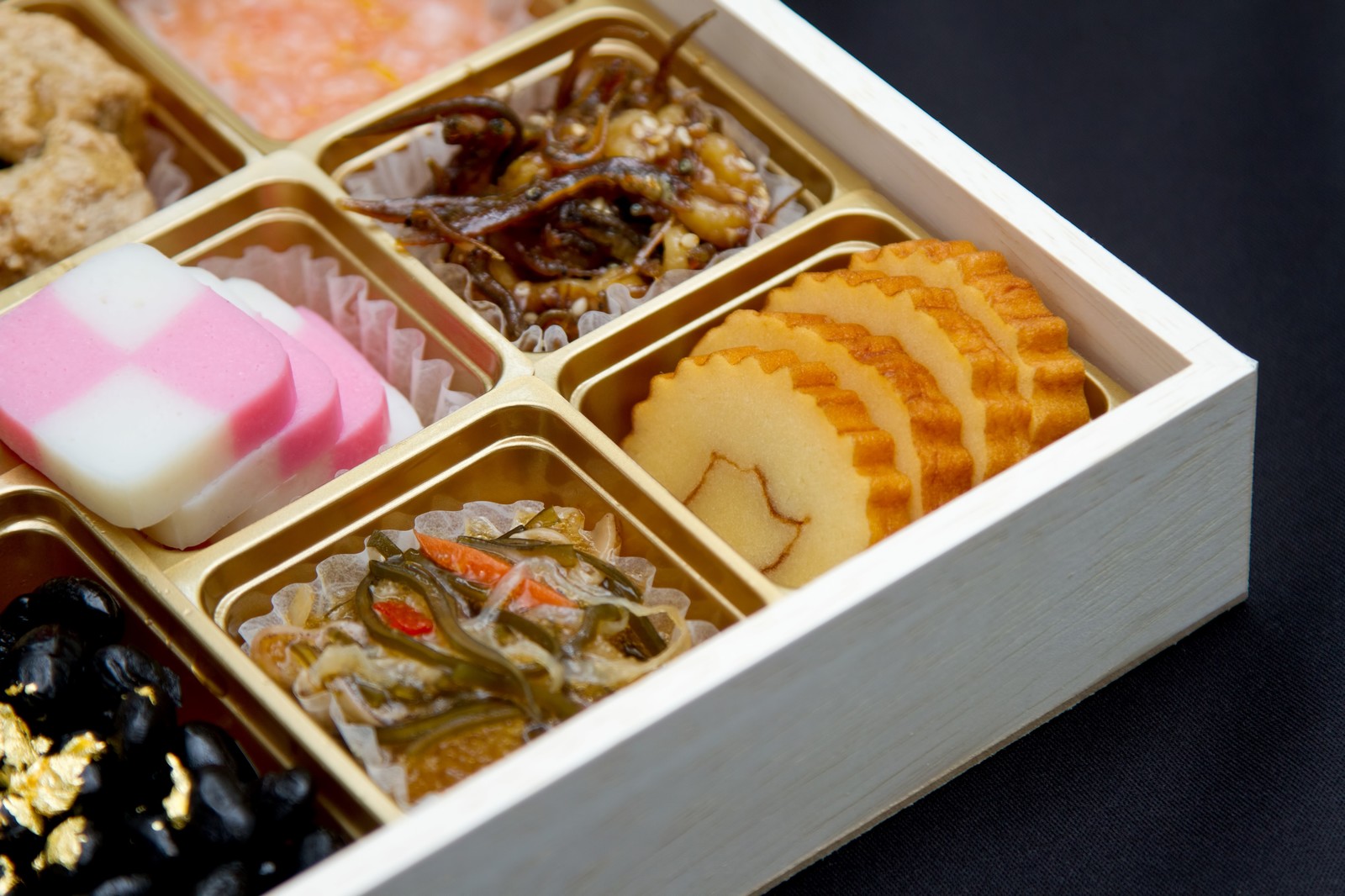
In the second position was ozoni, a soup of mochi and vegetables. Mochi is a symbolic food for New Year’s, but it’s a dangerous ingredient in soup; when not chewed properly, slippery mochi can be a choking hazard. Still, that doesn’t deter people from eating it; 73.5 percent of respondents said they prepare it every year.
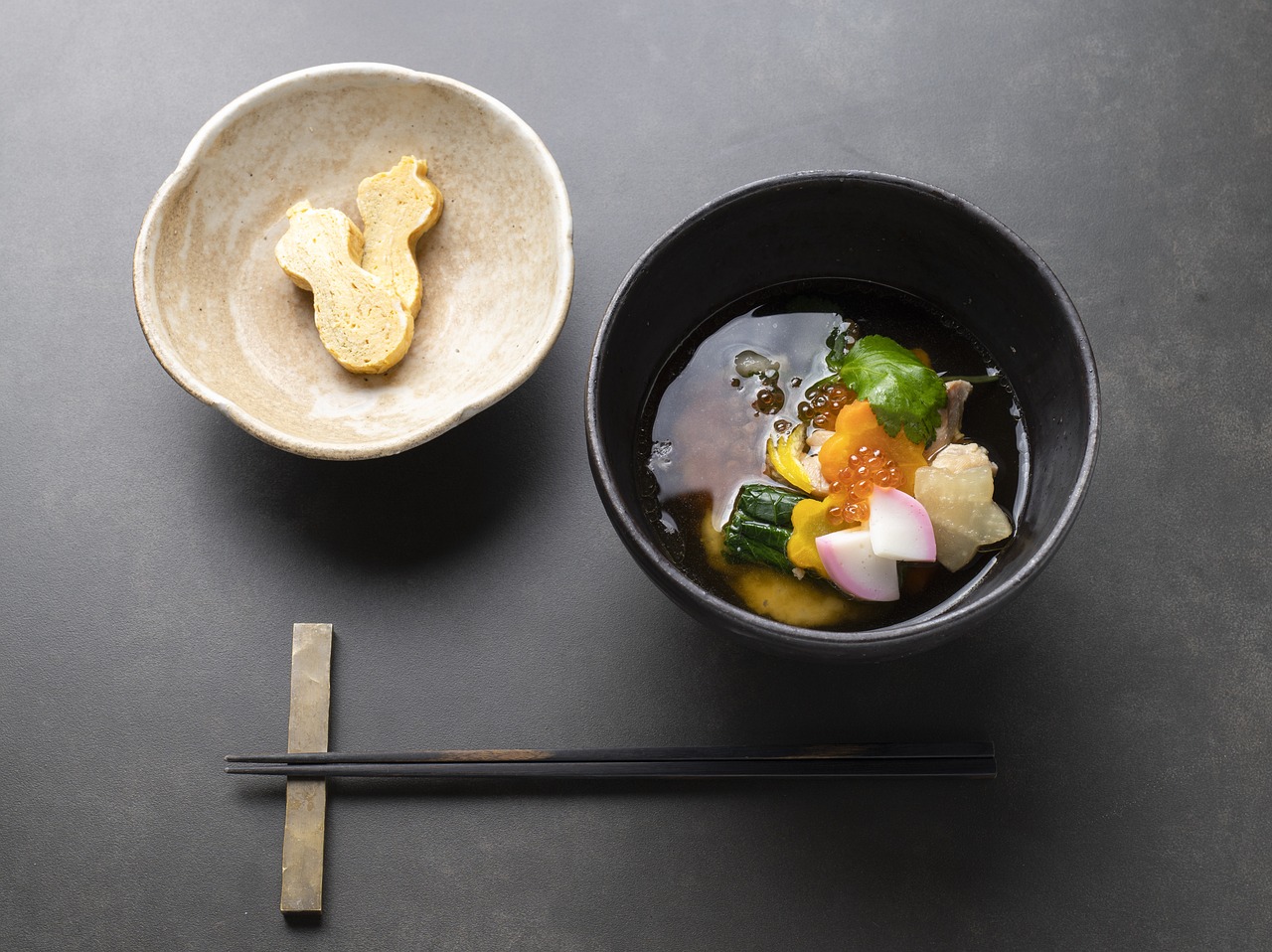
Also on the list were black soybeans cooked with sugar and soy sauce in third place (68.9 percent); datemaki, a rolled omelet mixed with fishpaste, in fourth (65.8 percent); and kazunoko, herring roe, in fifth (58.6 percent).
▼ Black soybeans
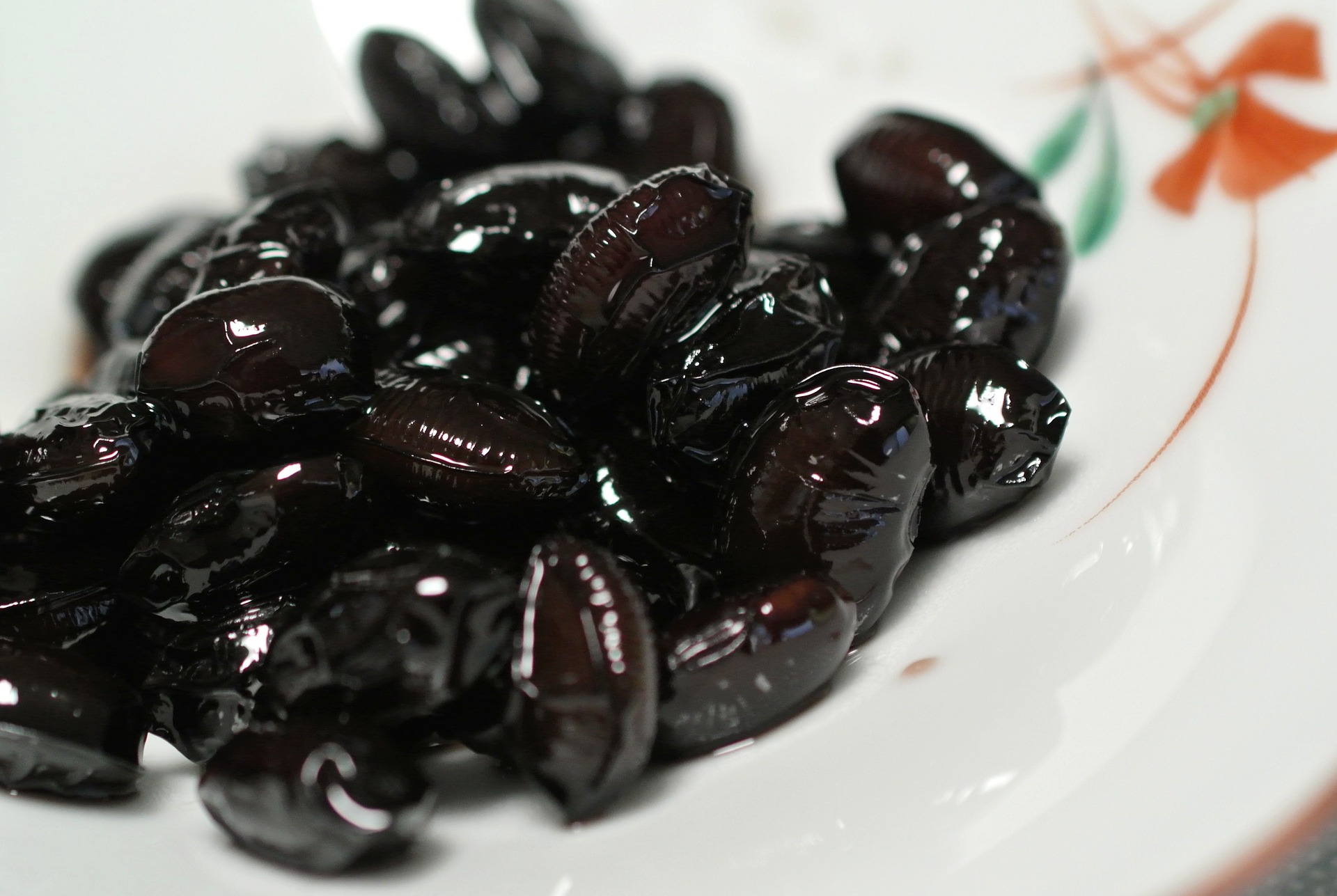
While the top three are prepared all across the nation, after that, the popular dishes vary by region. For example, the sixth most popular osechi dish, according to the survey, mashed sweet potatoes with chestnuts (kurumi kinton), is primarily eaten in eastern Japan, while western Japan seems to prefer candied chestnuts.
▼ Prefectures that eat kurumi kinton on the left, and those that eat candied chestnuts on the right
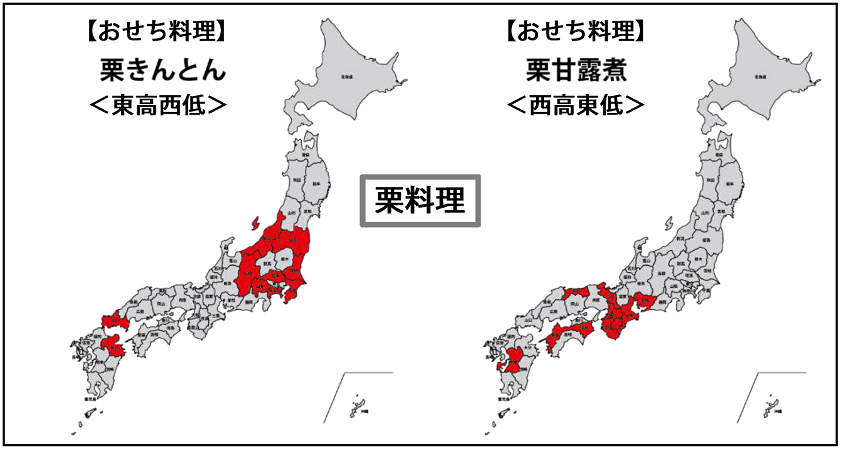
Like chestnuts, burdock roots (gobo) are considered a lucky food in Japan and are also a popular part of osechi cuisine. But how they’re prepared is different depending on the region. In eastern Japan, they prefer to stir fry their burdock root with soy sauce and sugar (a dish known as kinpira gobo), but in western Japan, they prefer it to be seasoned with sesame or vinegar.
▼ Prefectures that eat kinpira gobo on the left, and those that eat sesame or vinegar gobo on the right
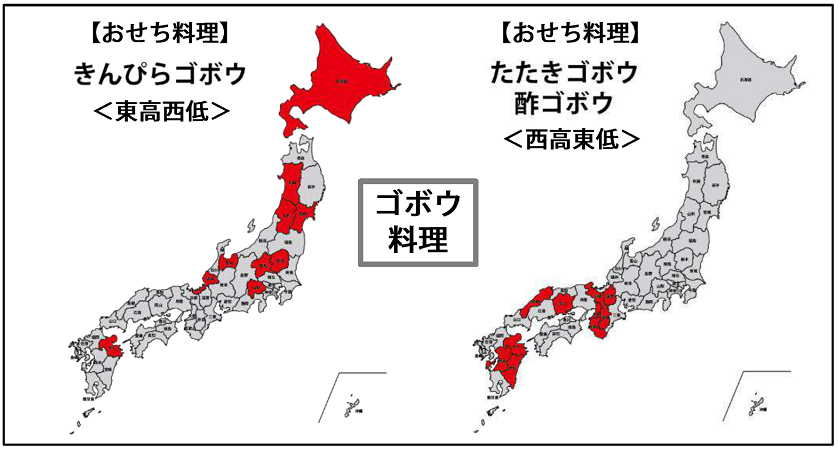
Even, ozoni, a nationwide favorite, has its own regional variations. For example, according to the survey, the way you cut the mochi that goes into it differs. In east Japan, they cut it into rectangles, but in west Japan, they prefer it to be round.
▼ Red likes them round, yellow likes them rectangular
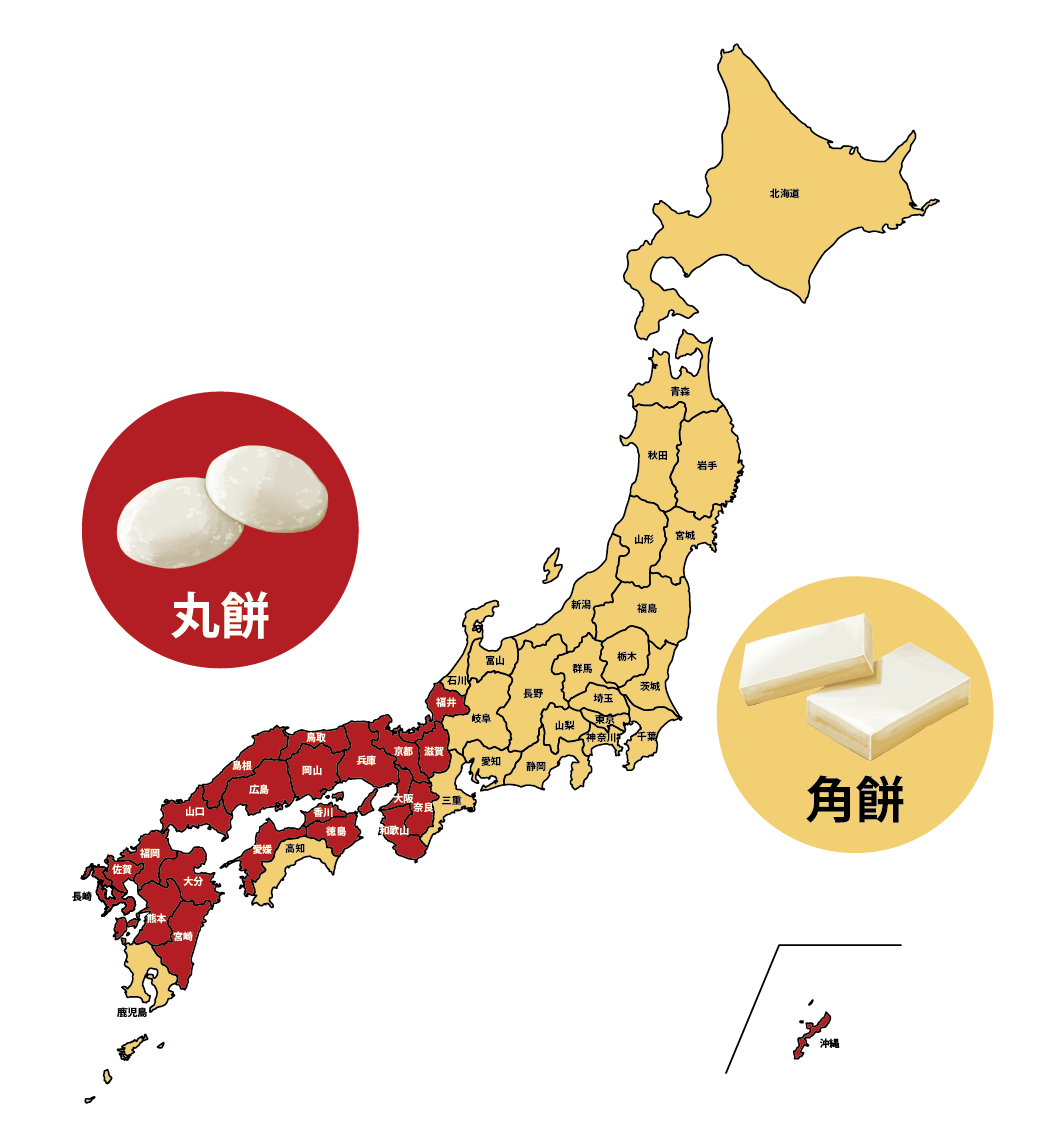
The type of fish paste used differs too; narutomaki, the kind that comes with a swirl in the middle (as shown below), is more popular in east Japan, but west Japan seems to like kamaboko, which is usually arch-shaped.
▼ Narutomaki
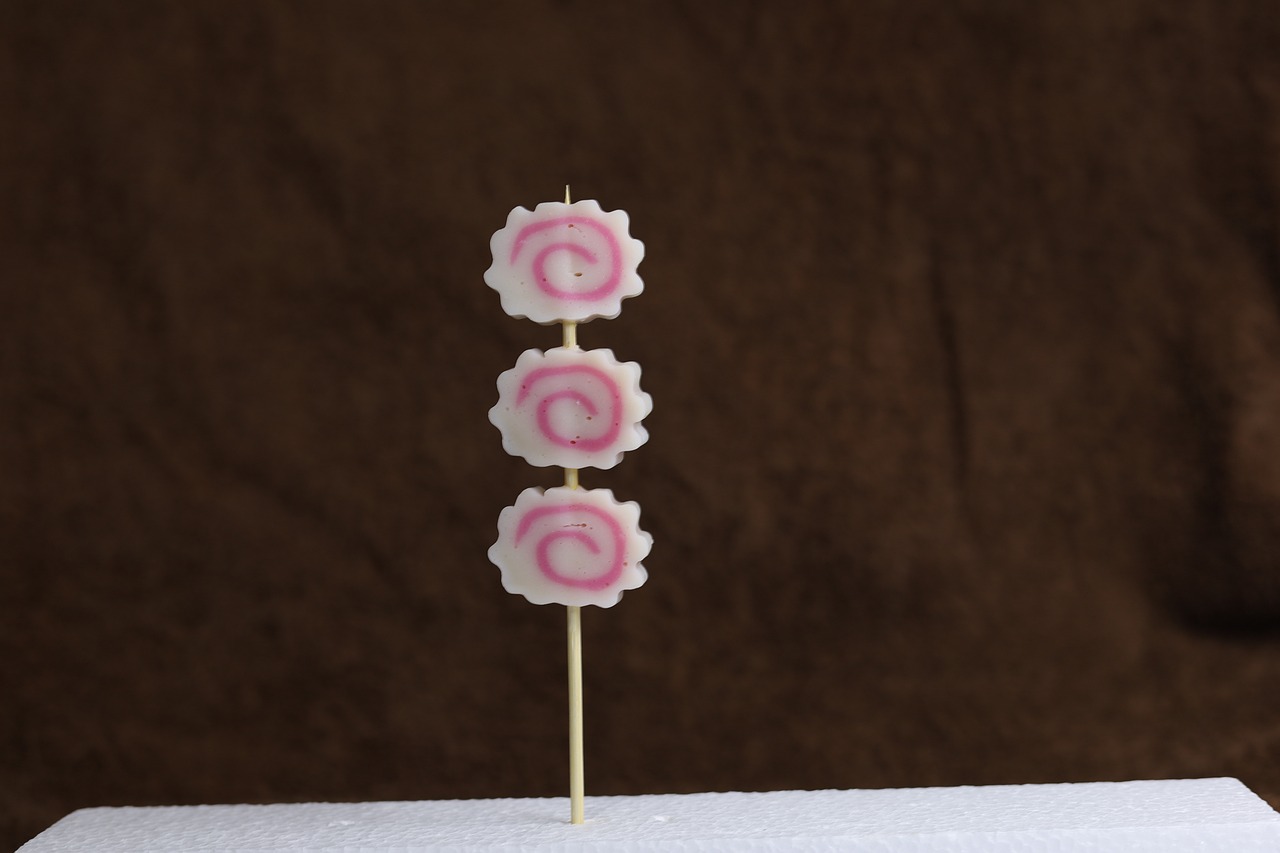
The survey also revealed that region dictates what seafood goes in too; in the east, they like to add in salmon roe, but in the west, shrimp is more popular. Even the vegetables used in ozoni (besides the most popular root vegetables) vary by region! For example, Kyushu alone is divided by north and south. The north likes to add a leafy green field mustard known as katsuona, but the south likes to use bean sprouts.
▼ Red is for katsuona, yellow is for bean sprouts, and blue represents another field mustard variety, shogatsuna.
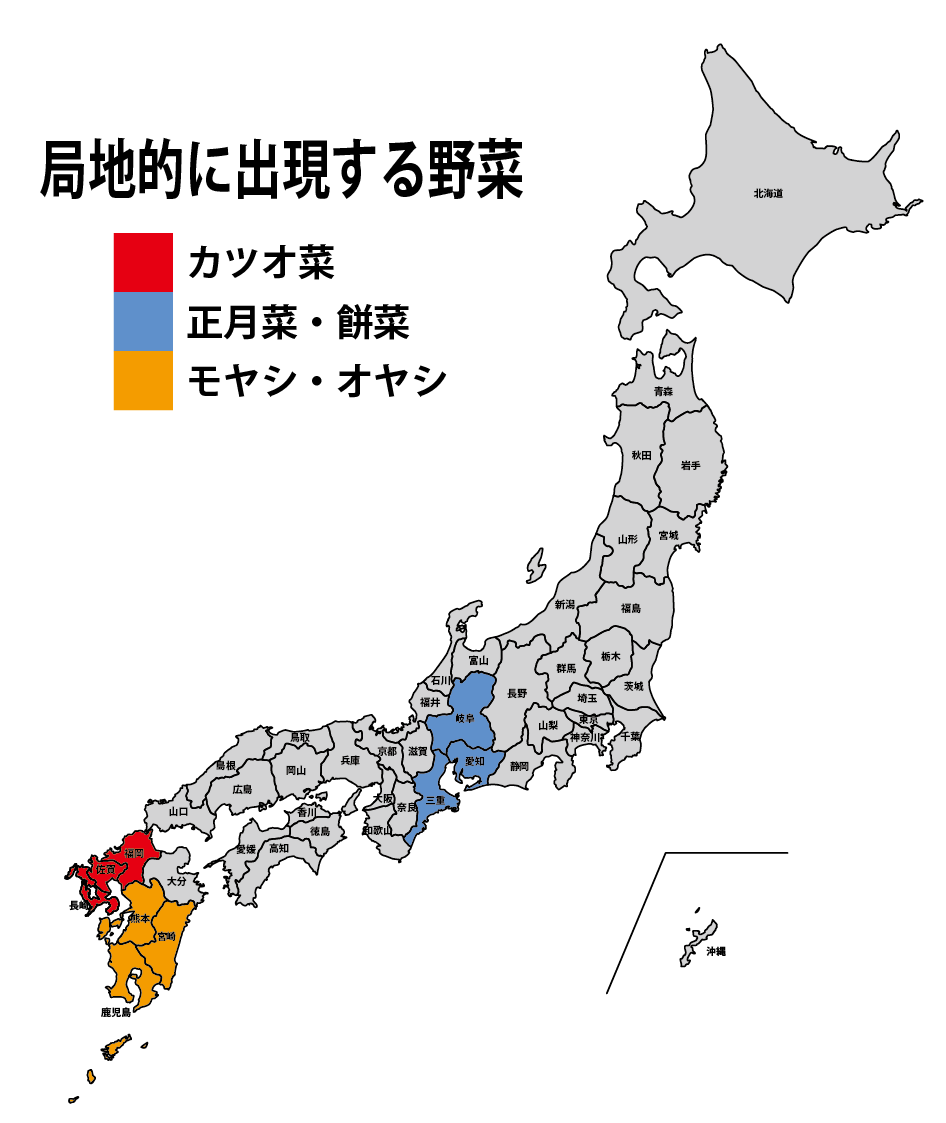
It’s interesting to see how many varieties of osechi there are all across the country. Sadly, osechi is losing popularity among younger people for a number of reasons, not least of which is the cost of purchasing a proper osechi box to last three days for all the people in your household (or all the ingredients needed to make one).
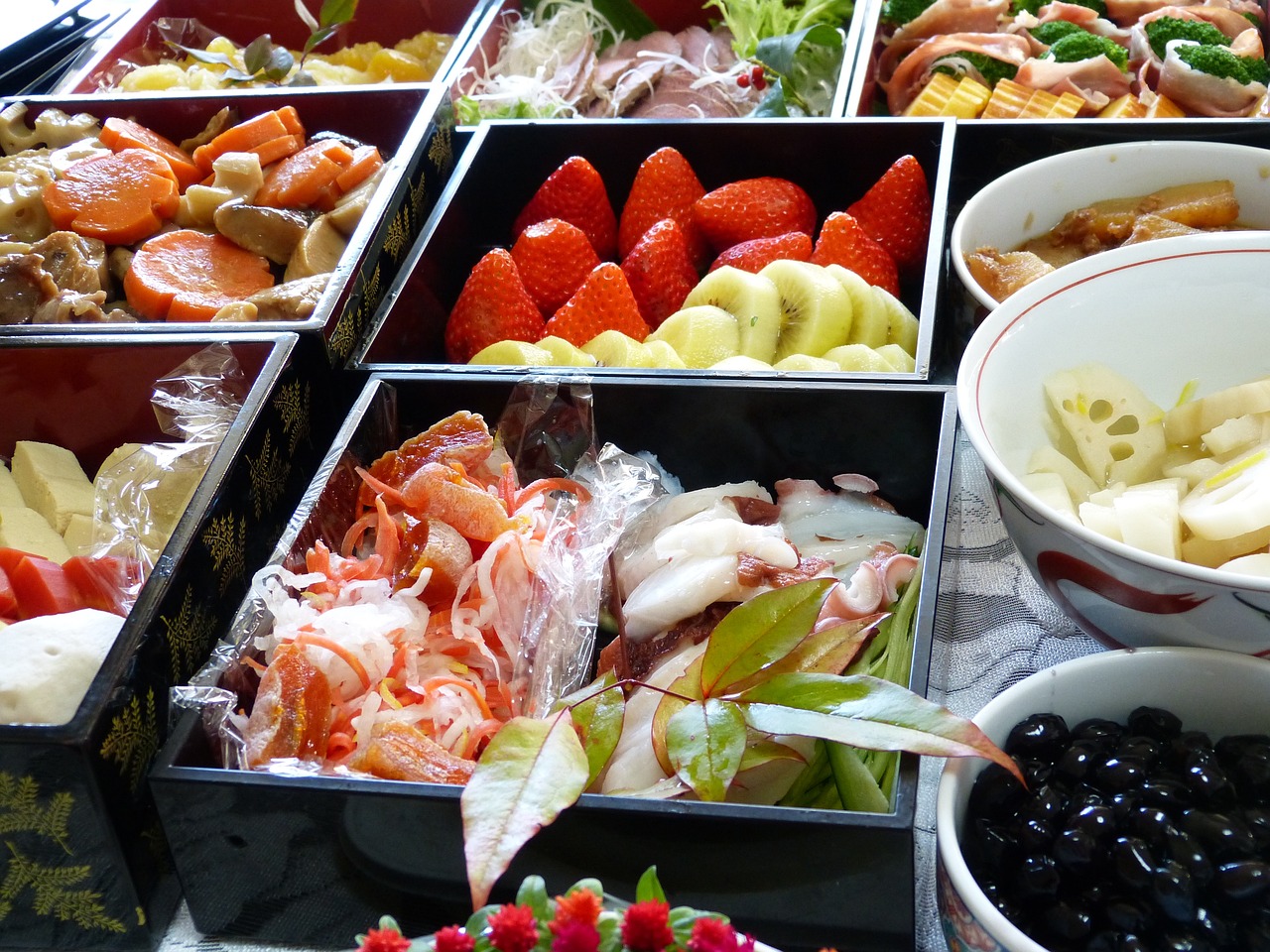
Still, another recent survey indicated that though people are celebrating the New Year differently in the age of COVID-19, osechi ryori still plays a major role–whether cooked or purchased–so we could still see this food tradition continue on for years to come.
Source: @Press
Top image: @Press
Insert images: @Press, Pakutaso (1, 2), Pixabay (1, 2, 3, 4)
● Want to hear about SoraNews24’s latest articles as soon as they’re published? Follow us on Facebook and Twitter!

No hay comentarios:
Publicar un comentario